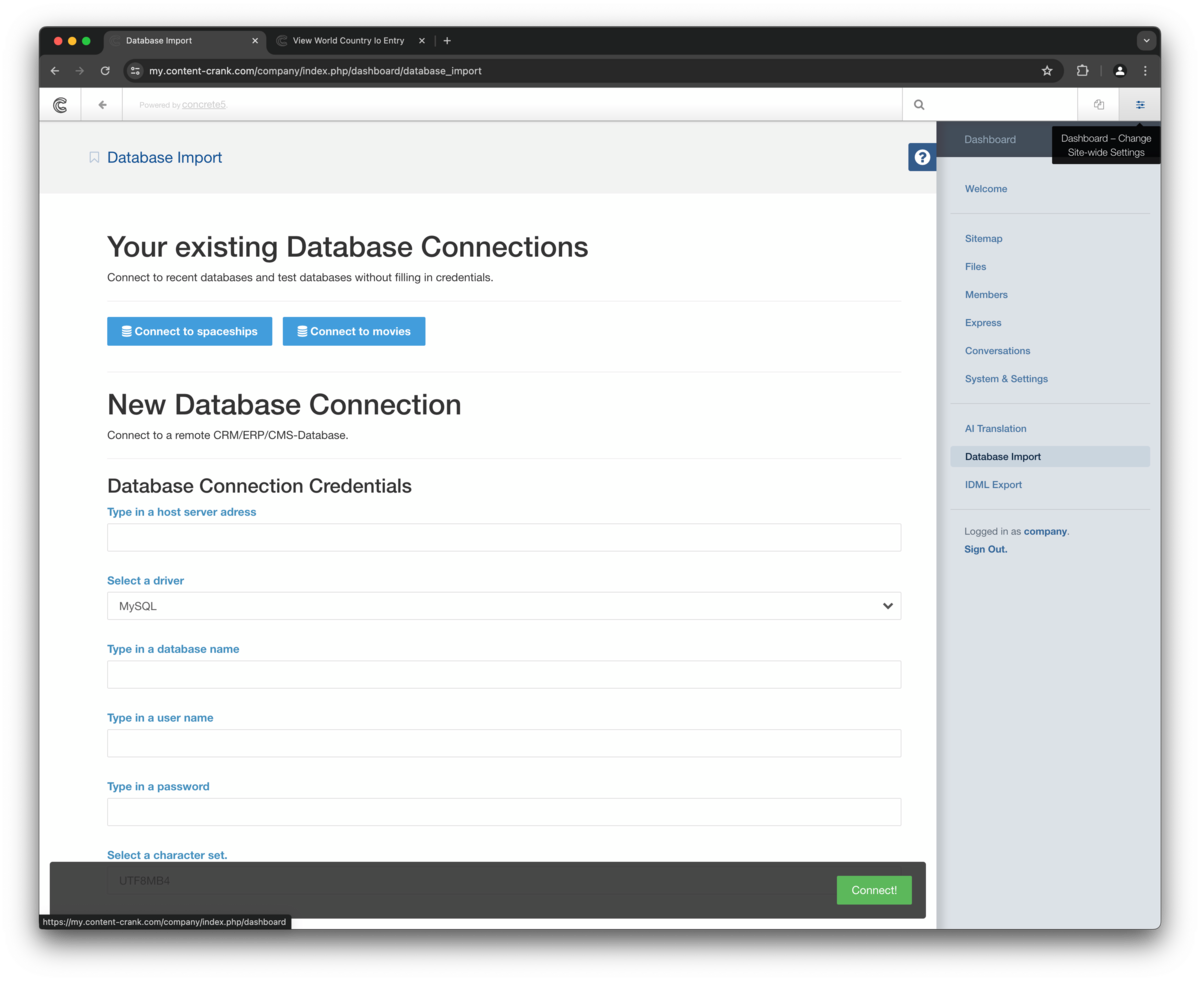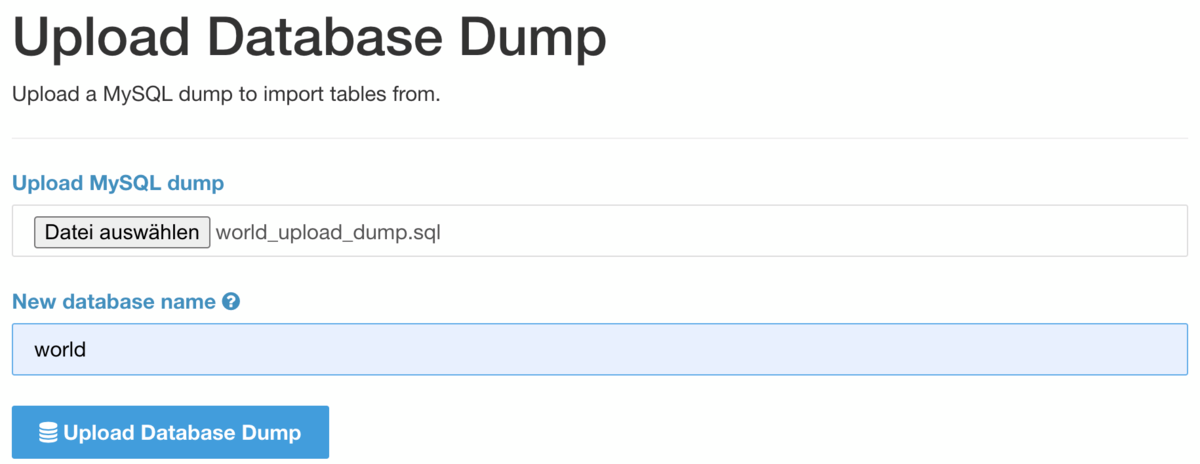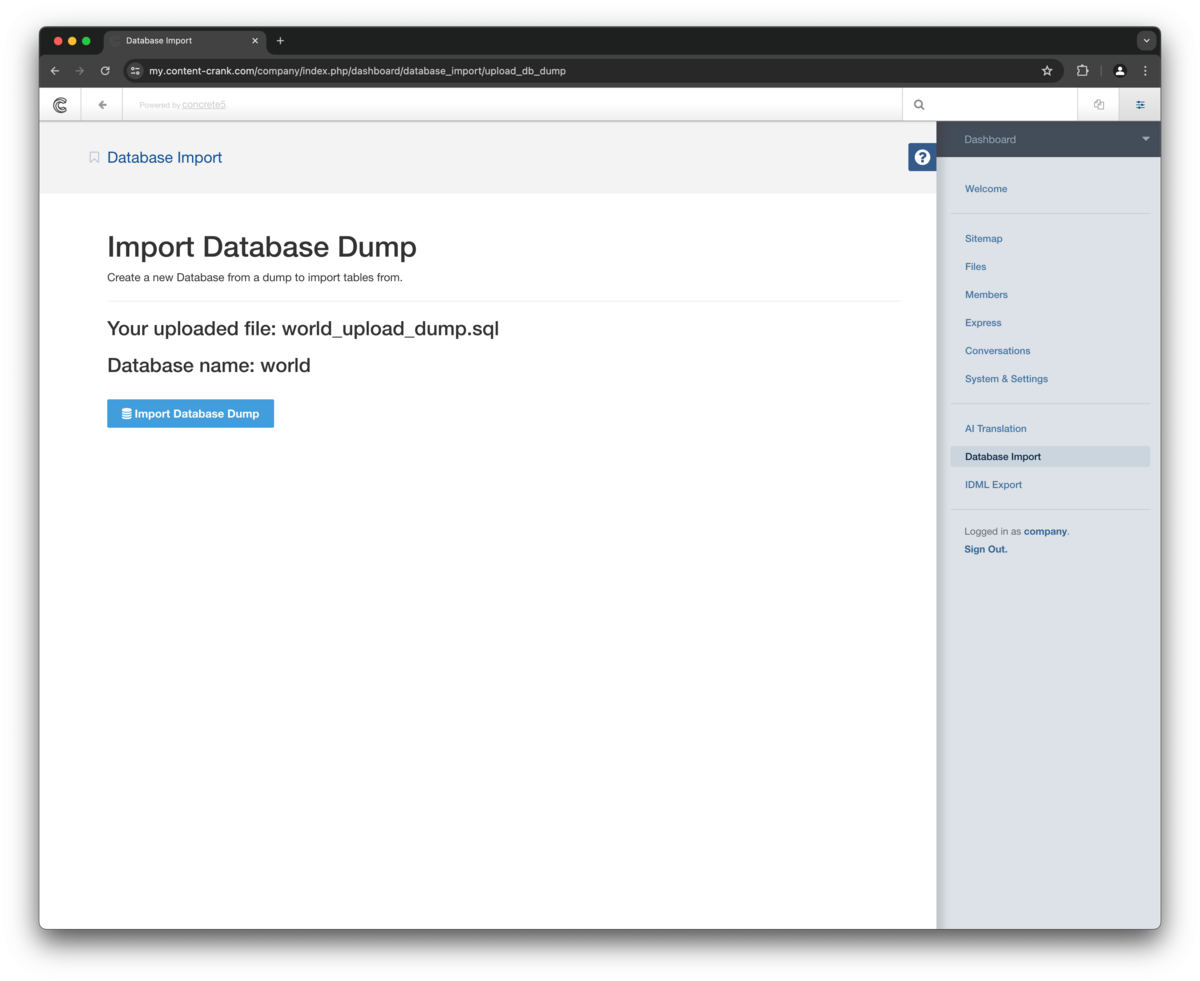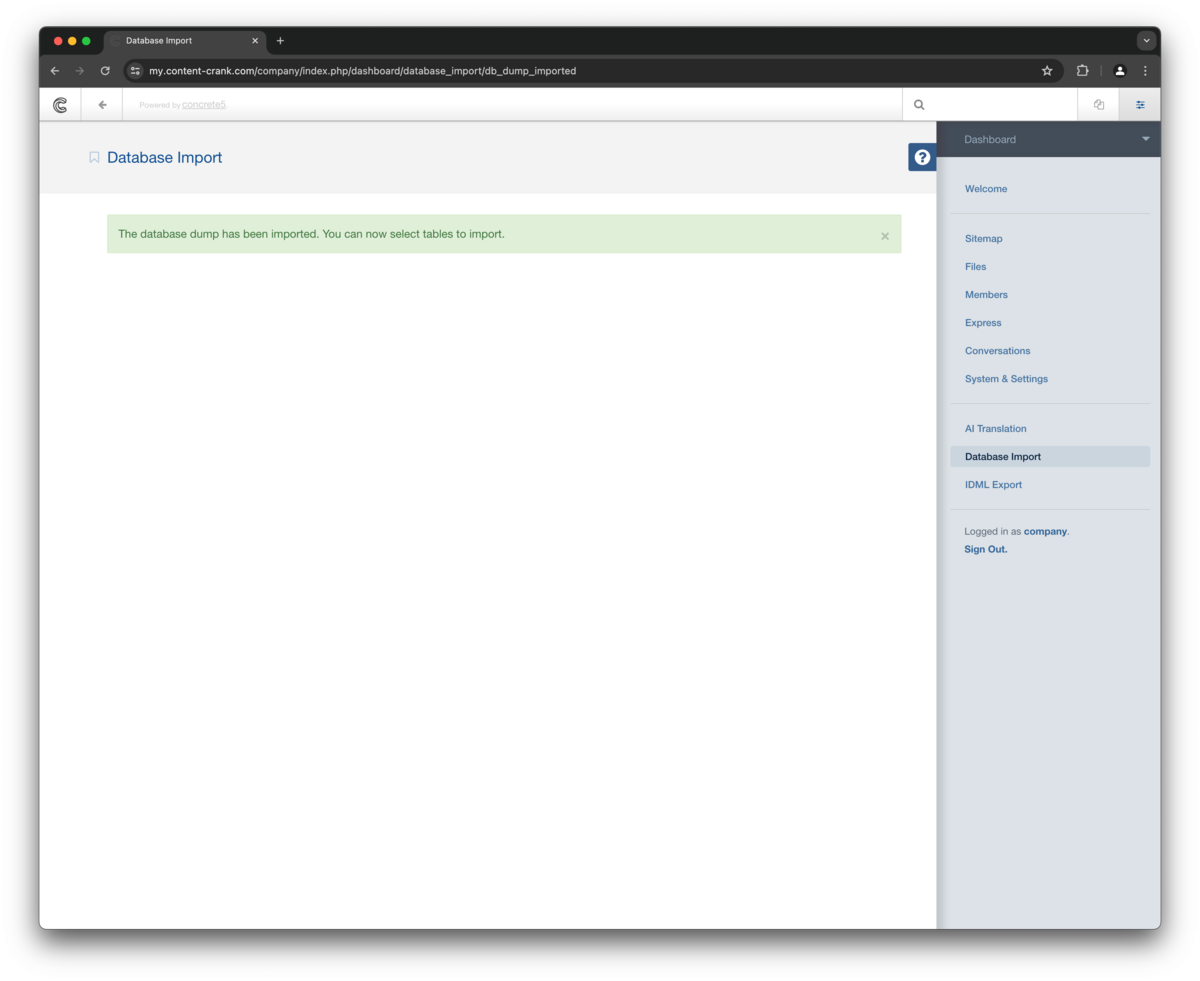Name
Import a SQL dump
Description
If you have a SQL file - a dump or database backup, you can import it using the Upload Database Dump feature.
Step
Step 1
Image

Name
Go to Database Import
Description
Navigate to /dashboard/database_import using the dashboard button at the right top of the screen.
Step 2
Image

Name
Upload Database Dump
Description
Scroll down to the upload section and select a SQL file to upload. Give your new database connection a name. Then click the upload button.
Danger
Remove any DROP, USE DATABASE, SET or CREATE DATABASE commands.
Warning
Constraints and primary keys should be added at the end of the dump to avoid foreign key check errors while importing.
Info
Upload the dump as .sql file
Danger
Make sure the import file contains only CREATE TABLE, INSERT and ALTER TABLE commands.
Info
The database should contain all tables associated with the tables you want to import.
Step 3
Image

Name
Import uploaded Database Dump
Description
After successfully uploading, you can import the database dump file. Click the import Button. You will be redirected when the process has finished.
Success
A blue loading bar at the top of the window will show an approximation of overall progress.
Warning
Please do not close the window or tab of your browser and let the process finish. Usually it only takes seconds to minutes, but depends on complexity and amount of data to be handled.
Step 4
Image

Name
Connect to imported database dump
Description
Your new database will now appear as new connection, when you go to /dashboard/database_import. From there you can import tables.
Step 5
Name
Import Tables Tutorial
Description
For the next steps to import the tables from your connected database follow the import tables tutorial.
Tutorial Program Tutorialprograms
See tutorial programs below according to your filtering or search.
Filters:
| Name | Description | Tutorial |
|---|---|---|
| Content Creation | Tutorials about the workflow and best practices to create and edit content and structure. | Express content pages Article Pages |
| Database Import | Tutorials for using the database features. Learn about connected databases, dump imports and updating existing entries and entities. | Import a SQL dump Connect to a remote database Importing tables |
| Express Data Objects | Express entities are data objects which can contain any combination of attributes and associations. Express entities can be created by a database import or from scratch. Some default entities are built in and ready to use as part of your ContentCrank. We prepared tutorials for the most frequently needed tasks. | Express Entries and Entities Entity settings Express content pages Express forms |
| IDML Export | Tutorials for Export features. Learn to create templates from your designs and to export idml documents. | IDML Export |
| Translation | Tutorials about the multilingual features. Learn about translating all your pages and express objects, editing translations and adding more languages. | Prepare Editorial Content for AI translation Prepare Express data for translation AI translation Edit Express translations |
Tutorial Tutorials
See tutorials below according to your filtering or search.
Filters:
| Name | Description | Tutorial Program |
|---|---|---|
| AI translation | Translate all your content in a few minutes to up to ~70 languages. | Translation |
| Article Pages | Article pages offer an easy way to create editorial content. | Content Creation |
| Connect to a remote database | If you want to pull data from a live database you can connect directly to it and update the objects later. | Database Import |
| Edit Express translations | Learn where to edit and correct Express translations. | Translation |
| Entity settings | Define how units, labels and associated columns are displayed. | Express Data Objects |
| Express content pages | Learn how to create content pages with express entities. Entries can be ordered, sorted and filtered in many ways. | Content Creation Express Data Objects |
| Express Entries and Entities | A quick explanation for express data objects. We use the spaceships example from the database import tutorials as reference. Imported express entities like the spaceships mirror their database table`s structure like columns, column types and column order. Generally put, express data objects create a logic layer between raw values, associations and their form of output. That means you can not only edit any value itself, the global structure and display of each express entry value can be customized. | Express Data Objects |
| Express forms | You can create different forms for different contexts like a full blown product katalogue ouput with all columns and values or a simplified output with only selected attributes like images and headlines. | Express Data Objects |
| IDML Export | Learn to export your content to idml. | IDML Export |
| Import a SQL dump | If you have a SQL file - a dump or database backup, you can import it using the Upload Database Dump feature. | Database Import |
| Importing tables | No matter if you connected directly to a database or uploaded a dump, the importing follows the same rules. | Database Import |
| Prepare Editorial Content for AI translation | Create a new localization for your pages. | Translation |
| Prepare Express data for translation | Create a dictionary for your express content. | Translation |
| Start your ContentCrank trial | Create a personalized demo system to try out our services for a week. Use predefined use cases to see everything in action without creating your own data - which you still can. |
Loading Conversation

